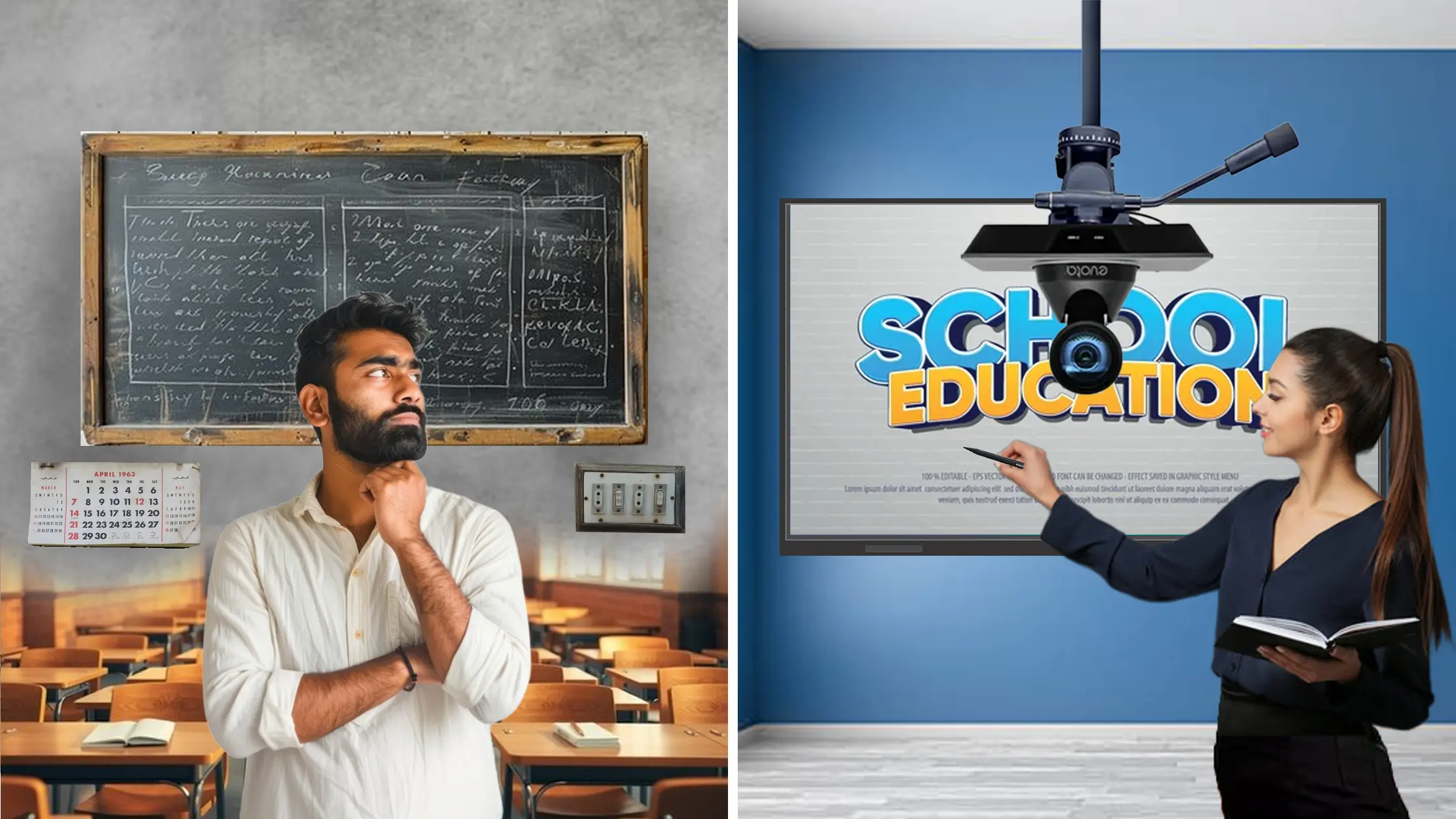
In the rapidly evolving landscape of education, technology is no longer a luxury—it's a necessity. Among the most transformative tools reshaping the modern classroom is interactive panel technology. These dynamic, touchscreen-enabled panels, often integrated with Unified Communication (UC) tools, are driving an educational revolution. From urban institutions to rural setups, interactive flat panel displays (IFPDs) are helping educators deliver more personalized, collaborative, and adaptive learning experiences. This article explores how interactive panels are not just enhancing engagement but fundamentally transforming how students learn and teachers teach. Let's delve deep into the ways this technology is changing the educational narrative.
Interactive Flat Panel Displays are high-resolution touchscreens designed for educational and collaborative environments. Unlike traditional whiteboards or projectors, IFPDs combine display functionality with computing power, enabling annotation, video playback, and real-time interaction directly on the screen.
Education in 2025 is marked by hybrid learning, growing tech adoption, and a greater emphasis on inclusivity. The pandemic years accelerated digital literacy and opened doors to innovations that prioritize engagement, flexibility, and student empowerment. IFPDs stand at the forefront of this transition.
With 20-point touch sensitivity, multiple students can interact with content simultaneously—encouraging collaborative problem-solving, brainstorming sessions, and teamwork.
Teachers can write, draw, highlight, or annotate on documents, websites, or multimedia without needing a separate device. This real-time interaction makes abstract concepts more tangible.
IFPDs connect with cloud platforms, allowing students and educators to access lessons anytime, anywhere. They also support saving and sharing notes digitally, which promotes asynchronous learning.
The evolution from chalk to digital whiteboards reflects the shift from passive to active learning. While traditional tools were limited in interactivity, smart panels make every lesson a multimedia experience.
Digital transformation has introduced tools like LMS platforms, AI tutors, and now, interactive panels. It aligns education with the real-world skills students need—collaboration, adaptability, and critical thinking.
Interactive panels cater to various learning styles by combining visuals, sound, and touch. This sensory engagement improves memory retention and keeps students focused longer.
Many IFPDs support gamification—turning lessons into challenges, quizzes, or competitions. This boosts motivation and reinforces concepts in fun, meaningful ways.
Students can split the panel into multiple zones, allowing group members to work simultaneously. This encourages real-time collaboration and peer learning.
Multi-touch panels allow several users to interact at once, making group discussions more dynamic and inclusive.
Features like text-to-speech, adjustable font sizes, and multilingual support ensure no student is left behind. This is especially crucial in linguistically diverse or special needs classrooms.
Some panels integrate with AI platforms to tailor content based on student progress, enabling differentiated instruction and self-paced learning.
Teachers can assess comprehension instantly via interactive quizzes and polls, allowing for real-time course correction.
With built-in tools and access to digital repositories, planning becomes efficient. Teachers spend less time on logistics and more on actual teaching.
Whether in physical or virtual classrooms, UC tools ensure that teachers can interact with students effortlessly through video calls, shared documents, and chat features.
IFPDs work seamlessly with tools like Zoom or Microsoft Teams, enabling blended learning and ensuring continuity in education even during disruptions.
AI-powered analytics help identify student strengths and weaknesses, guiding content recommendations and pacing.
Educators can access performance dashboards, helping them tweak strategies and provide targeted support.
Rural and under-resourced schools often lack internet or basic tech infrastructure, which can hinder deployment.
Transitioning from traditional methods to tech-integrated teaching requires mindset shifts and ongoing professional development.
Urban schools with higher budgets lead adoption, but rural institutions are catching up with budget-friendly models and NGO collaborations.
Solitaire offers tailored solutions for Indian education, addressing scalability, affordability, and multilingual support—making IFPDs accessible across socio-economic barriers.
Durable hardware, OTA software updates, and service warranties contribute to long-term utility.
Leasing models, government subsidies, and shared infrastructure can make widespread adoption feasible.
Tech-rich environments turn students into co-creators of knowledge rather than passive recipients.
Curricula must evolve to incorporate digital literacy, collaborative projects, and critical thinking challenges.
IFPDs support instant assessments—quizzes, polls, and visual responses—enabling quick feedback loops.
By tracking engagement and comprehension, teachers can refine strategies and enhance outcomes continuously.
Group tasks, debates, and simulations foster analytical and interpersonal skills vital for future careers.
Students become adept at using modern tools, preparing them for higher education and the workforce.
Engage parents, students, and educators early. Highlight benefits through pilot programs and training.
Start with one classroom or subject, gather feedback, and scale progressively with data-driven insights.
Features like voice input, text-to-speech, and visual aids make learning more inclusive for differently-abled students.
Yes. Entry-level models and government grants can make implementation feasible for smaller institutions.
Basic digital literacy, platform-specific tutorials, and continuous PD are essential for effective usage.
Minimal. Regular software updates and cleaning are usually sufficient.
Yes. Many features, like annotation and local media playback, function offline. Cloud sync resumes once reconnected.
Track engagement metrics, learning outcomes, and teacher satisfaction to evaluate effectiveness.
Interactive panel technology isn’t just a tool—it’s a transformative force in education. By enabling active, inclusive, and engaging learning experiences, IFPDs bridge the gap between traditional classrooms and the demands of a digital future. As challenges around infrastructure and training are addressed, this technology holds the promise of elevating learning outcomes, preparing students for lifelong learning, and ensuring education truly becomes a two-way street.
Your email address will not be published. Required fields are marked *
.svg)
By Inhype • November 10, 2025
A New Chapter in Indian Education India’s education system is evolving faster than ever before. Traditional teaching tools are giving way to inte
Read More
By Inhype • July 19, 2025
Empowering Classrooms with Audio-Visual Innovation
Read More.png)
By Inhype • June 8, 2025
In 2025, online education has become a powerful force shaping the future of learning across India. Whether you're an educator, coach, or training inst
Read More.png)
By Inhype • June 8, 2025
In today’s digitally driven education and business environments, interactive smart boards have become essential tools. Whether you're enhancing hybr
Read More.svg)
By Inhype • July 8, 2025
Transforming Education & Business Presentations with GoLive eTechnologies' Digital Solutions In today’s digital-first world, the way we teach, co
Read More
September 22, 2025
No comments yet. Be the first to comment!